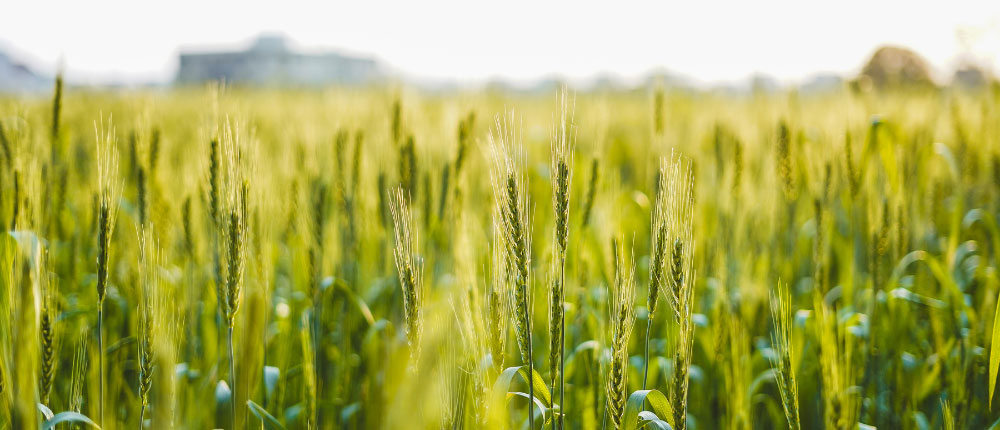Weeds compete for the key resources of water, fertility, and light. In the past we have focused on control and this reactive management style has led weed resistance
Chemical control is an effective approach for managing many weed species, but weed management will be both optimized and preserved by including a variety of cultural, mechanical, and chemical methods of control. When looking at specific weed species, kochia can pose considerable challenges for many production systems, and particularly in wheat. Managing kochia is a continuous effort, and there are several aspects of a successful program that grower and consultants should consider.
Avoiding herbicide resistance
- Crop Rotations – Continuous crop situations can lead to a buildup of weed seedbanks. Monocultures can lead to the buildup of weed populations that are difficult to control in that crop. Additionally, it places increased pressure on herbicide chemistries utilized in that monoculture as the ability to rotate effective modes of action can be limited. Implementing a crop rotation that allows for alternative, effective modes of action can help manage weed populations and optimize and preserve effectiveness of herbicides.
- Tillage practices – both conservation and conventional tillage have their benefits and drawbacks. While conservation tillage can improve soil properties and health, water infiltration, and reduce erosion, it can also lead to an increase in occurrence of certain weeds that where once suppressed with deep tillage. Alternatively, conventional tillage can “bury” seeds of smaller weed species and make it challenging for populations to increase over time. Understanding the dynamics of each field can aid in the decision to utilize strategic tillage to optimize production practices and pest management.
Foundations of successful chemical control
- Allelic Frequency – no weeds left behind this includes post-harvest & fallow.
- Pre to start weed free – the best weed is the weed we never see.
- Proper rates – Applying herbicides at their full labelled rates is critical for the success of current and future seasons. Labelled rates are designed to provide an effective dose of active ingredient(s) for the labelled weed species. When rates are used that are less than the labelled rate, even in combination products, it increases the selection pressure applied to weed species that contain some level of natural herbicide tolerance. Over time, this low-level tolerance can develop into the selection for increased herbicide tolerance of a weed population.
- Layered Residuals (stay weed free) the combination of pre-emerge or fallow with an in-crop application for best consistency
- Proper pest identification – Accurate identification of target weed(s) is important for knowing which herbicides will be most effective. Knowing your weed species and field history will help you to understand which herbicides are most effective for your respective situation.
- Timely applications – Applying herbicides to weeds at the right time and right size is one of the final steps for a successful herbicide application. Most herbicide labels will reference the optimum weed height that maximizes herbicide efficacy. Many post-emergent herbicides are most effective when weeds are less than 2-3” in height, while our pre-emergent herbicides perform best when they are applied and incorporated before active weed germination/emergence.
Managing kochia in wheat with BATALIUM® AMPED™ herbicide
- Kochia is found across many production systems and it can pose a significant problem in wheat production. What makes this weed even more challenging is the onset of herbicide resistance in many kochia biotypes. The days of using a single mode of action to control kochia are in the past. Applying a herbicide with multiple modes of action to small, actively growing kochia will optimize control of this troublesome weed and allow wheat crops to reach peak performance.
- BATALIUM AMPED Herbicide is a new solution offered by UPL that directly addresses the challenges of weed control in spring and winter wheat. BATLIUM AMPED Herbicide is a high-performance formulation of 3 active ingredients that provides unmatched control of many grass and broadleaf weeds. This formulation contains full rates of flucarbazone-sodium (Group 2), fluroxypyr (Group 4), and bromoxynil (Group 6), which provides post-emergent control of 11 grass weeds and over 70 broadleaf weeds from a convenient 16 fl oz/A use rate. Flucarbazone features the flush after flush control of key grass weeds like green foxtail and wild oats that growers have depended on from EVEREST® 3.0. This is partnered with fluroxypyr and bromoxynil for industry leading control of such broadleaves as kochia, Russian thistle, and common lambsquarters.
- BATALIUM AMPED Herbicide features a wide application window with superior crop safety, allowing growers to target kochia at the most effective stage for application. Extensive field testing with university cooperators continues to confirm the finishing power that BATALIUM AMPED Herbicide provides wheat growers. Replicated tests across the Northern Plains show industry leading control of green foxtail and variety of broadleaf weeds including kochia. BATALIUM AMPED Herbicide allows wheat growers to bring an unmatched level of control to their weed management programs.

Figure 1: Untreated Check - Fargo, MN, 2022




